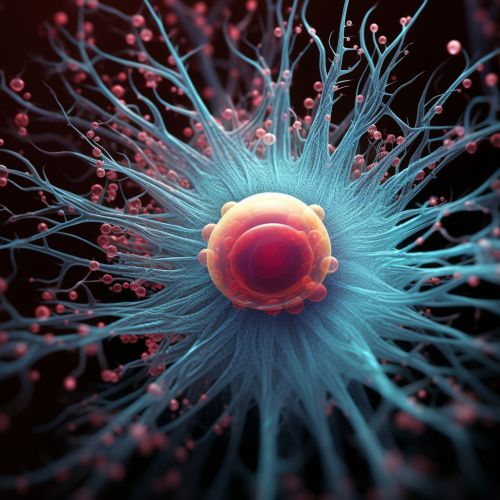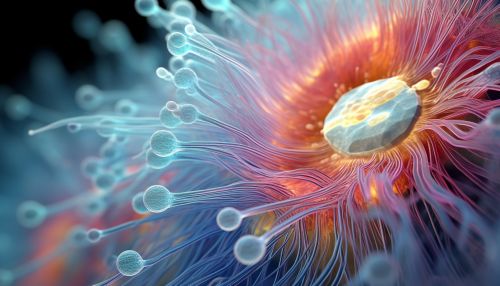Ciliopathy
Overview
A ciliopathy is a type of genetic disorder that is associated with defects in the structure and function of cilia. Cilia are microscopic, hair-like structures present on the surface of all mammalian cells. They are involved in a variety of functions, including movement, sensory perception, and signal transduction.


Ciliopathies are typically characterized by a wide range of symptoms and can affect multiple organ systems. These disorders are often associated with a variety of phenotypes, including renal cysts, retinal degeneration, obesity, polydactyly, cognitive impairment, and congenital heart disease.
Classification
Ciliopathies can be broadly classified into two categories: primary ciliary dyskinesia (PCD) and syndromic ciliopathies.
Primary Ciliary Dyskinesia
Primary ciliary dyskinesia (PCD) is a disorder characterized by abnormal ciliary structure and function. This results in impaired mucociliary clearance, leading to recurrent respiratory infections, sinusitis, and bronchiectasis. PCD is also associated with situs inversus, a condition in which the internal organs are mirrored from their normal positions.
Syndromic Ciliopathies
Syndromic ciliopathies are a group of disorders that are characterized by a wide range of symptoms affecting multiple organ systems. These include Bardet-Biedl syndrome, Joubert syndrome, Meckel-Gruber syndrome, and polycystic kidney disease, among others.
Pathogenesis
The pathogenesis of ciliopathies is complex and involves a variety of cellular processes. The primary defect in these disorders is the dysfunction of cilia, which leads to impaired cellular signaling and abnormal development.
Cilia are involved in a variety of cellular processes, including cell movement, fluid transport, and signal transduction. They are also critical for the proper development and function of many organ systems. Therefore, defects in ciliary structure or function can lead to a wide range of clinical manifestations.
Diagnosis
The diagnosis of ciliopathies can be challenging due to the wide range of symptoms and the overlap between different disorders. However, a combination of clinical features, imaging studies, genetic testing, and, in some cases, ciliary biopsy can help establish the diagnosis.
Treatment
The treatment of ciliopathies is largely supportive and aims to manage the symptoms and complications of the disorder. This may include respiratory therapy for lung disease, renal replacement therapy for kidney disease, and vision aids for retinal degeneration. In some cases, surgical intervention may be necessary.
Research Directions
Research in ciliopathies is focused on understanding the molecular mechanisms underlying these disorders and developing targeted therapies. This includes the study of ciliary structure and function, the role of cilia in cellular signaling, and the genetic basis of ciliopathies.
